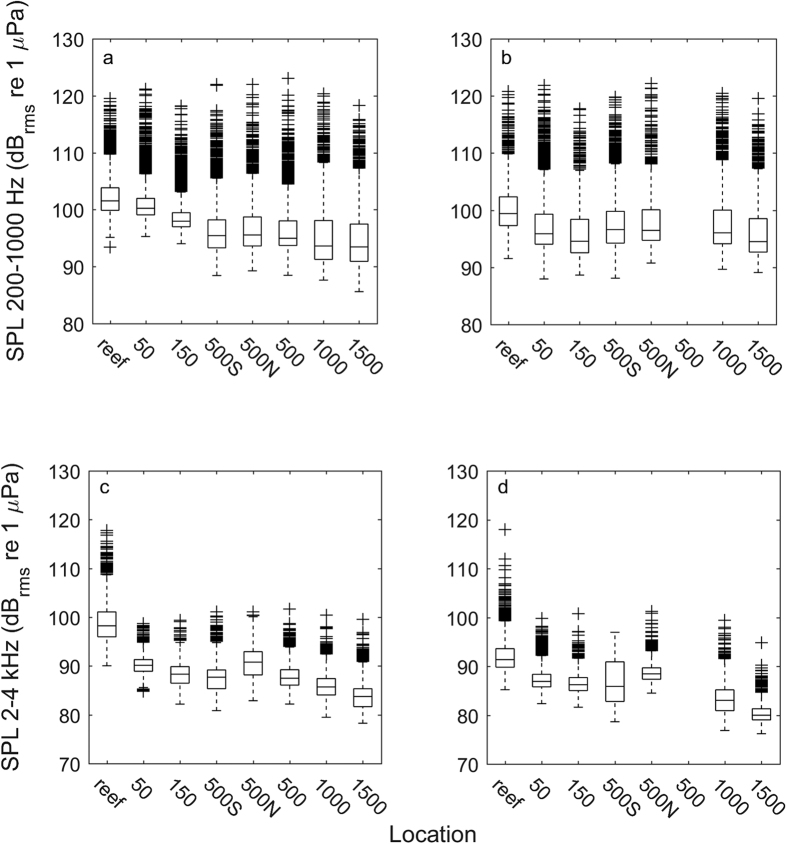Figure 5. Boxplots showing SPL in 5 ms windows in low- (200–1000 Hz) and high-frequency (2000–4000 Hz) bands ((a–d) respectively) during the dawn (a,c) and mid-morning (b,d) transects pooled across sampling days.
While the median SPL values roughly follow the same trend as that for the mean values displayed in Fig. 3, there is considerable spread (in particular in the low-frequency band) and there are multiple high-amplitude outliers for nearly every recording position. The number of high-amplitude outliers relative to the lower amplitude averages suggests that while larval animals may not be able to hear the average sound from a reef, it is possible that they could detect some high-amplitude transients. No data were available for the 500 m position during the mid-morning transect. Central bar – median; box – 25–75 percentiles; whiskers – most extreme data points not considered as outliers; crosses – outliers.

